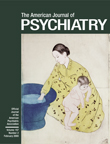Antisocial behavior is among the most vexing problems psychiatrists face. Although such troublesome behavior has been well described, its cause, treatment, and prevention remain elusive
(1). This book is designed to help close that gap by providing a comprehensive review of the current literature. The three authors—a child psychiatrist, a criminologist, and a social psychologist—are well-known in their respective areas. Rutter, in particular, is an internationally known child psychiatrist with expertise in child development who has been informing our field since the 1960s.
The authors justify a new review by pointing to the growth in the extent and quality of information on antisocial youth, social changes that affect antisocial behavior (for example, changes in Eastern Europe and the end of the Cold War), and the growing understanding of delinquency itself (e.g., better descriptions of situational delinquent activities and the persistence/nonpersistence of antisocial behavior).
The book begins with a review of historical trends that shows what most of us know from watching television and reading the newspaper: crime in general—and among juveniles, too—has risen steadily since World War II in most Western countries. Antisocial behavior in general is heterogeneous, the authors observe, with two major subdivisions: 1) with hyperactivity and 2) with early onset; other proposed subgroups, they point out, have less validity. One of my mentors, the late Richard L. Jenkins, M.D., would disagree with this conclusion. He spent much of his life exploring the differences between socialized and undersocialized delinquents and found important differences between these groups, including differences in their long-term adjustment. Unfortunately, Jenkins’ substantial contributions
(2) are largely ignored.
The authors next explore the role of individual features in determining antisocial behavior, including such influences as hyperactivity, cognitive impairment, temperament (e.g., impulsivity, sensation seeking, aggressivity, etc.), distorted social information processing, and biological features. The authors give short shrift to genetics, except as it pertains to hyperactivity, and devote relatively little attention to biological substrates, despite the burgeoning interest in this area and the replicability of certain findings (e.g., low pulse rate).
The authors also explore the role of psychosocial features, such as family characteristics (teenage parenting, large family sizes, and broken homes), poverty and social disadvantage, parenting style, and the influence of peer groups. Society-wide influences are also reviewed, for example the role of ethnicity in antisocial behavior—a discussion of which is considered politically incorrect in the United States—and the role of the mass media. They find clear evidence for differences in antisocial behavior among the ethnic groups, but they develop no strong conclusions as to why. They conclude that the main role of the media is to make violent behavior more acceptable at a cultural level through direct imitation or learning. Not surprisingly, they also conclude that the availability of guns has a “significant part to play in overall levels of the most antisocial behavior of all: the substantial recent rise in United States homicides by young people” (p. 253). This conclusion, of course, will not be popular among certain segments of the population.
A worrisome finding is that, although boys commit most of the antisocial acts reported, the gender ratio is falling, and girls are accounting for increasing proportions of reported crimes. As the authors note, there may be some social context to this in that boys are more likely to be influenced by antisocial peer groups. The data on the persistence of antisocial behavior are also reviewed. Most large longitudinal studies have confirmed the persistence of childhood behavioral problems with problems in adulthood, including difficulties in psychosocial functioning and criminal offending.
The book ends with hopeful chapters on prevention and intervention, which should be of interest to the commentators and pundits who came out of the woodwork in the wake of the Littleton, Colo., tragedy, serving up their own answers to the problem of teen violence. The authors categorize preventive strategies into those occurring in the “predelinquency” phase and those considered “postdelinquency.” As expected, the most worthwhile preventive methods tend to focus on children at high risk for delinquent behavior, a fact many policy makers seem unaware of. Some of the more promising methods include preschool education, parental training, early intervention in disruptive behavior, and multimodal interventions such as the Seattle Social Development Project (involving work with children and parents as well as improved classroom management by teachers). Although preliminary results are encouraging, the long-term impact of these programs is unclear. Once young offenders have transgressed, several alternatives are available, including punishment, diversionary programs, restorative justice, boot camps, and incarceration. Not discussed is another generally ignored finding by Jenkins and his colleagues: the role of early adjudication, which they found to have a positive effect on reducing the chance of reoffending
(3).
Because of recent interest in pharmacological treatments of problem behavior, I was disappointed that the book includes no review of this growing body of literature. Although there is little consensus about when—and which—children should be medicated, drugs may provide a partial answer for the most difficult cases
(4). Since the purpose of the book was to provide a comprehensive review of the new data accumulated since 1983, this omission is puzzling. Nonetheless, the positive features of the book outweigh such omissions. I strongly recommend this book for anyone interested in antisocial behavior in general and, in particular, for anyone interested in learning more about intervention and prevention techniques. The chapters focusing on prevention should be required reading for those concerned about teen violence.

